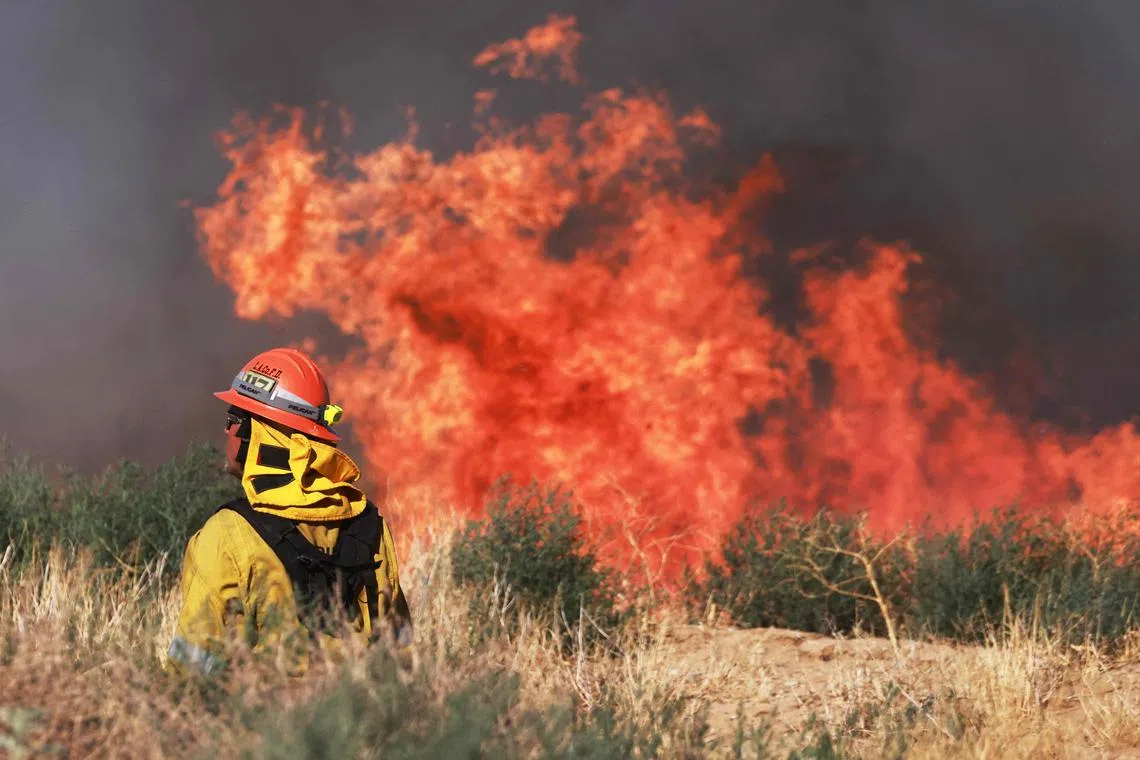California blaze raises fears of dangerous wildfire season
Sign up now: Get ST's newsletters delivered to your inbox

The inferno just north of Los Angeles forced the evacuation of more than a thousand campers from a recreational park and the closure of a popular boating lake.
PHOTO: AFP
Follow topic:
LOS ANGELES - California firefighters on June 17 tackled the state’s biggest blaze
The inferno just north of Los Angeles rapidly burned through almost 6,070ha over the weekend, forcing the evacuation of more than a thousand campers from a recreational park and the closure of a popular boating lake.
Some 1,150 firefighters were working to contain the so-called Post Fire, dousing the flames from seven air tankers and constructing perimeter lines, but it remained just 8 per cent contained by the morning of June 17.
The blaze is “exhibiting extreme fire behaviour”, warned the National Interagency Fire Centre, with low visibility and winds of up to 80kmh impeding firefighters’ efforts.
It was one of around a dozen mostly smaller fires to ignite over a weekend in California that saw high temperatures, low humidity and gusty winds.
The blazes come at the start of a potentially critical time for the notoriously fire-prone region.
In the western United States, recent wet winters have prompted the rapid growth of vegetation, which experts warn could prove dangerous as it dries out in the weeks and months ahead.
Grass and trees in parts of California were already “sufficiently dry to support elevated fire weather concerns, and recent fire activity suggests that fuels are drying quickly and supportive of fire spread”, said the National Weather Service.
“As the result of two consecutive wet winters, there is a lot of additional growth, particularly of grass, but also, to a lesser extent, of heavier brush too,” said Dr Daniel Swain, a climate scientist with the University of California, Los Angeles.
The grass is starting to dry out, although this early in the summer there is still some moisture, he added.
Wildfires are a natural – and necessary – part of the region’s life cycle.
But climate change, caused by humanity’s burning of fossil fuels – which releases greenhouse gases into the atmosphere – is making extreme weather conditions more intense and frequent.
A potentially historic heatwave is set to hit vast swathes of the central and eastern US this week, where temperatures are expected to be unseasonably high for June.
Scorching temperatures have already broken early summer records in the western US.
Earlier in June, Las Vegas recorded a 44 deg C day, which is earlier in the year than ever before.
Some 17,000ha has already burned in California in 2024 – around 50 per cent higher than the five-year average by this point in the year.
Echoing a national trend, wildfires in 2024 have been fewer in number, but larger in size, than in recent years. AFP

